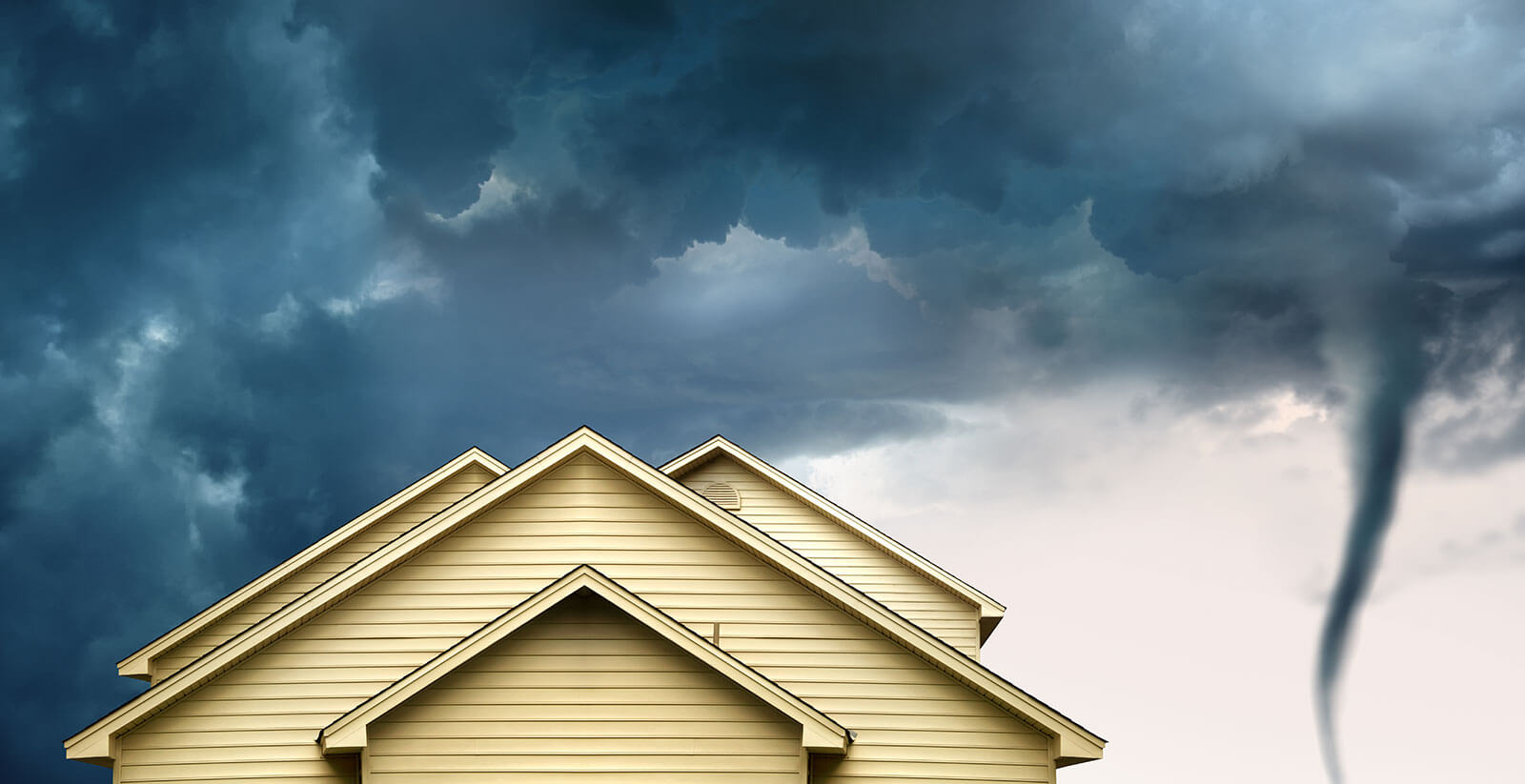
Stay safe during tornado season
How to prepare for a tornado — hours, days or months in advance
March 16, 2023 — Disaster insights | Homeowner insights | Insurance insights
Storms capable of producing tornadoes come out of nowhere during peak tornado season. One minute you’re outside enjoying the spring weather, and the next, a tornado watch or warning is in effect. When the conditions are right for tornadoes, there can be little time to prepare, and tornado safety should be top of mind.
When is tornado season?
Part of preparing for a tornado includes understanding when one can occur. Anytime the weather conditions are right for thunderstorms, a tornado is possible.
Tornadoes form when warm, humid air rises and cool air falls inside thunderclouds causing the air to twist and whirl, creating a funnel cloud.
Tornado season varies by geography and refers to the time of year the highest number of tornadoes occur. Tornado alley refers to the location in the United States where occurrences are most common.
Tornado season in Texas and the southern Plains region is from May into early June. On the Gulf Coast, it is earlier in the spring. In the Northern Plains and Upper Midwest, tornado season is in June or July. However, they can happen any time the conditions are right.
A tornado warning vs. a tornado watch
When tornadic activity is possible, the National Weather Service issues tornado watches or warnings. A warning means a tornado is happening or imminent and you should take shelter immediately. A tornado watch means the conditions are right for one to occur. In either case, you need to plan to act quickly to ensure your safety.
Let’s look at how you can prepare for a tornado an hour before a storm the day before severe weather and at the beginning of storm season.
An hour before a storm
During tornado season, monitor the weather with your favorite weather app. If severe storms are predicted, be prepared to act.
During a tornado watch
If a tornado watch is in effect for your area or a surrounding area, you will likely have time to take some precautionary steps. You might:
- Review your plan – know where you will take shelter if a warning is issued
- Pull your vehicle into a garage
- Bring any outside animals inside
- Adjust your plans so you don’t have to be out in a car during potential storms
During a tornado warning
Take shelter immediately. Keeping yourself and your family members and loved ones safe is your only responsibility.
A day before severe weather
If you know severe weather is in the forecast, there are some things you can do on and around your property to prepare. High winds and hail, common with conditions that produce tornadoes, can cause damage to your home.
Take a walk around your property:
- Secure any outdoor items that could be picked up and carried away by high winds — lawn furniture, trampolines, etc.
- Move smaller things into your garage or other secure space — planters and other decorative items
- Pick up any yard debris or fallen branches and twigs
- Trim bushes, branches or limbs that rub or brush against your house
These can all become wind-born and cause more damage during high winds.
At the start of storm season
Make a safety plan
- Before storms begin, review your plan. Where will you seek shelter in your home or at work?
- The CDC provides a list of places to seek shelter for various situations. Review your options and know where your safe room is at home and work. No matter where you are, basic guidelines include moving to the lowest floor or interior room without windows.
- Before storms start, create an emergency kit, or replenish the one you have. Check out FEMA’s list of items to include in your emergency kit and how to store one.
Prepare your home
- Trees cause significant damage to homes and buildings during storms. Assess the health of the trees on your property and take care of any dead trees, limbs or hanging branches that need to be removed.
- Your roof protects your home against the elements. Before storms start, have a professional review the integrity of your roof, checking for missing shingles, damaged flashing and other problem areas that could be compromised by high wind speeds allowing water to penetrate your home.
- Review your homeowners insurance documents. These important documents can usually be accessed electronically with a login. Make sure you know how to log in and review the steps necessary to file a claim.
After the storm
When severe storms strike, knowing what to do afterward can be just as important as preparing.
Stay safe
- Listen to local authorities and emergency alerts for updated information. Watch for downed powerlines and broken utility lines. Wear protective gear, including long pants, sturdy shoes, gloves and appropriate personal protective equipment as you begin to clean up tornado damage.
Start the recovery process
- Assess your property and call your insurance provider if you need to file a claim. Signs of hail damage on your roof, fallen trees, missing shingles can all result from a tornado. With the right coverages in place, your insurance company can help restore your home.
- Documentation is part of filing a claim. Once you reach out to your homeowners insurer, they can walk you through each step of the claim process. As a best practice, take pictures of damage before removing debris or beginning to clean up. Take necessary steps to mitigate further damage.
- Be on alert for dishonest contractors who take advantage of large disasters like tornadoes. The National Insurance Crime Bureau (NICB) provides a post-disaster checklist to ensure any work you hire to be done on your property is completed in a fair, honest and reputable way. As for references from friends, read reviews online, interview prospective contractors, understand the scope of work, and check for licenses and insurance before hiring someone to work on your property.
Tornadoes are unpredictable. Don’t be caught off guard. Take the time to prepare early, so if you’re area is given a warning, you can act immediately and stay safe.
